How a Minimalist West Village Townhouse Is Given a Sensuous New Life
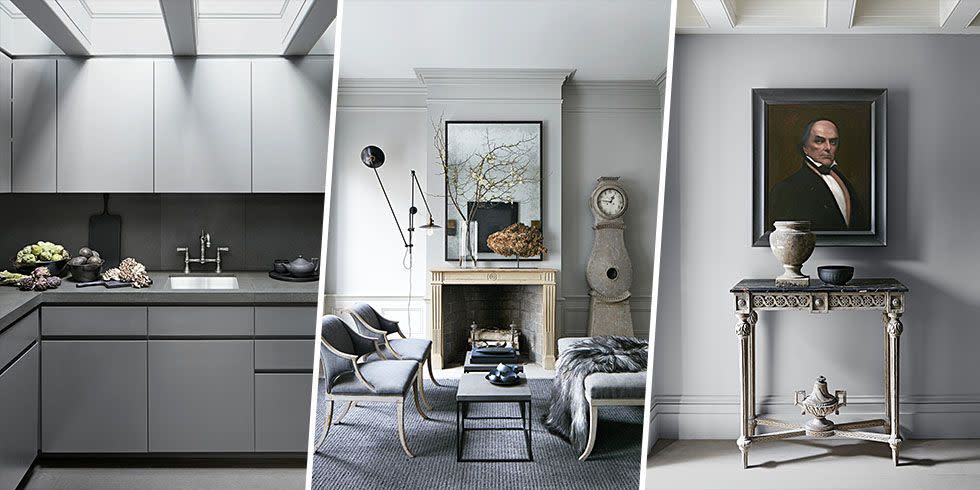
Stefan Steil and Eric Pike bought the top-floor apartment in an 1840s townhouse on King Street in Lower Manhattan just after September 11. “It was a challenging time for all of us,” says Pike. “But it also inspired us to make a permanent and peaceful home for ourselves.”
The city may have been going through its darkest moment back then, but the apartment that drew them was full of light. It had windows facing south and north and big skylights to bring in the sunshine. What it didn’t have was style-it was just a bland white box. But it turned out to be a blank slate that inspired a gut renovation and innovative thinking. Steil, German-born, is an interior designer. Pike, a creative director-formerly for Martha Stewart, now at Nest Fragrances-is as precise as he is imaginative. “Eric has a great eye, and for this apartment he had an even stronger vision than me,” Steil says of his partner of 17 years.
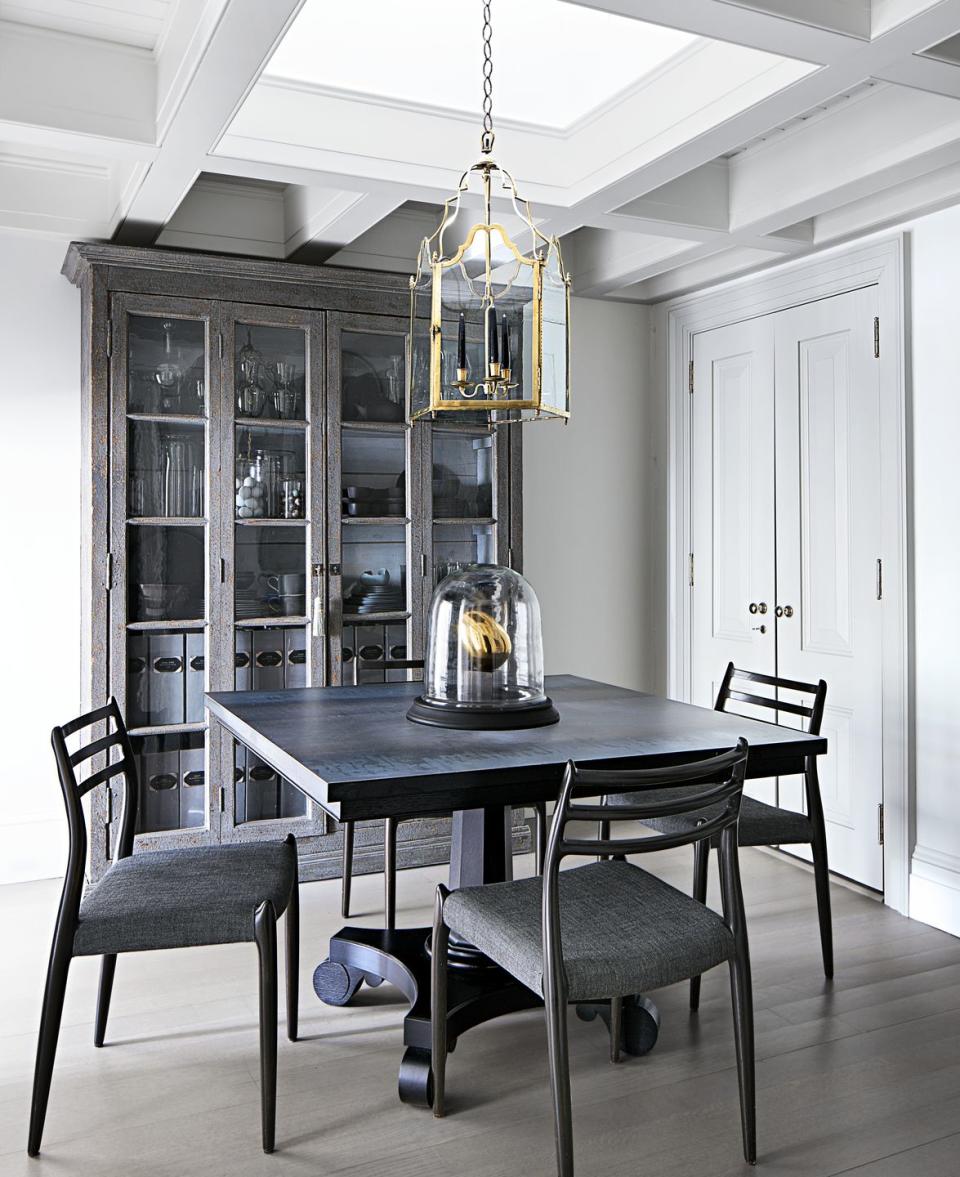
The dining room’s square proportions and skylight were inspired by Thomas Jefferson’s Monticello. The steel-and-wood table is custom, the vintage Niels Otto Møller chairs are upholstered in a Perennials fabric, and the 18th-century candlelit lantern is Swedish. A French polished-brass ovoid from the 1960s is displayed within a vintage handblown-glass dome.
Actually, it was a double vision-informed by aspects of both Jeffersonian and Swedish Gustavian architecture. They leaned heavily on Jefferson’s use of extra-deep door casings between rooms to hide appliances and dishes, creating a historical ambience and a haven from the clutter and trappings of modern daily life. “Our friends thought we were crazy because we were actually making rooms smaller, but it gave us more storage space,” Pike says.
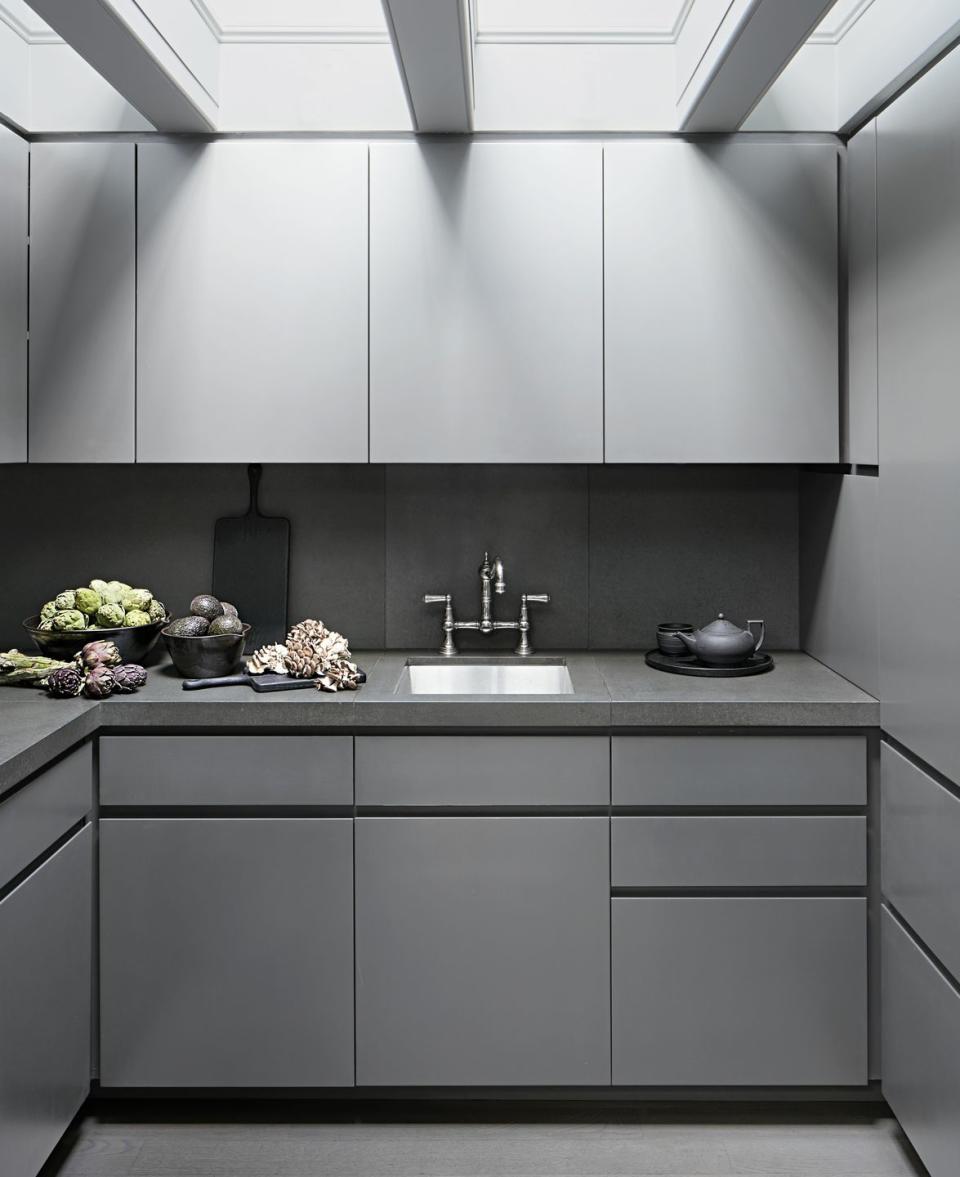
Once the architecture satisfied them, including elaborate moldings and coffered ceilings to hide unlevel beams, they turned their well-trained eyes to surfaces. Steil, who teaches at the New York School of Interior Design, likes color; Pike, not so much. “You get tired of one color, and I’d be wanting to change it every six months,” he says. Blessed with such good light, however, they found they could move away from basic white into various shades of gray, each hand-mixed by Pike.
Knowing how to embrace gray areas-whether in design or in relationships-is the key to any good collaboration: “We just trust each other, that’s all,” Pike adds. So much so that they saw eye to eye about how to fill their gray rooms with an emphasis on texture over color, and with a quirk factor to bring in mystery and whimsy.
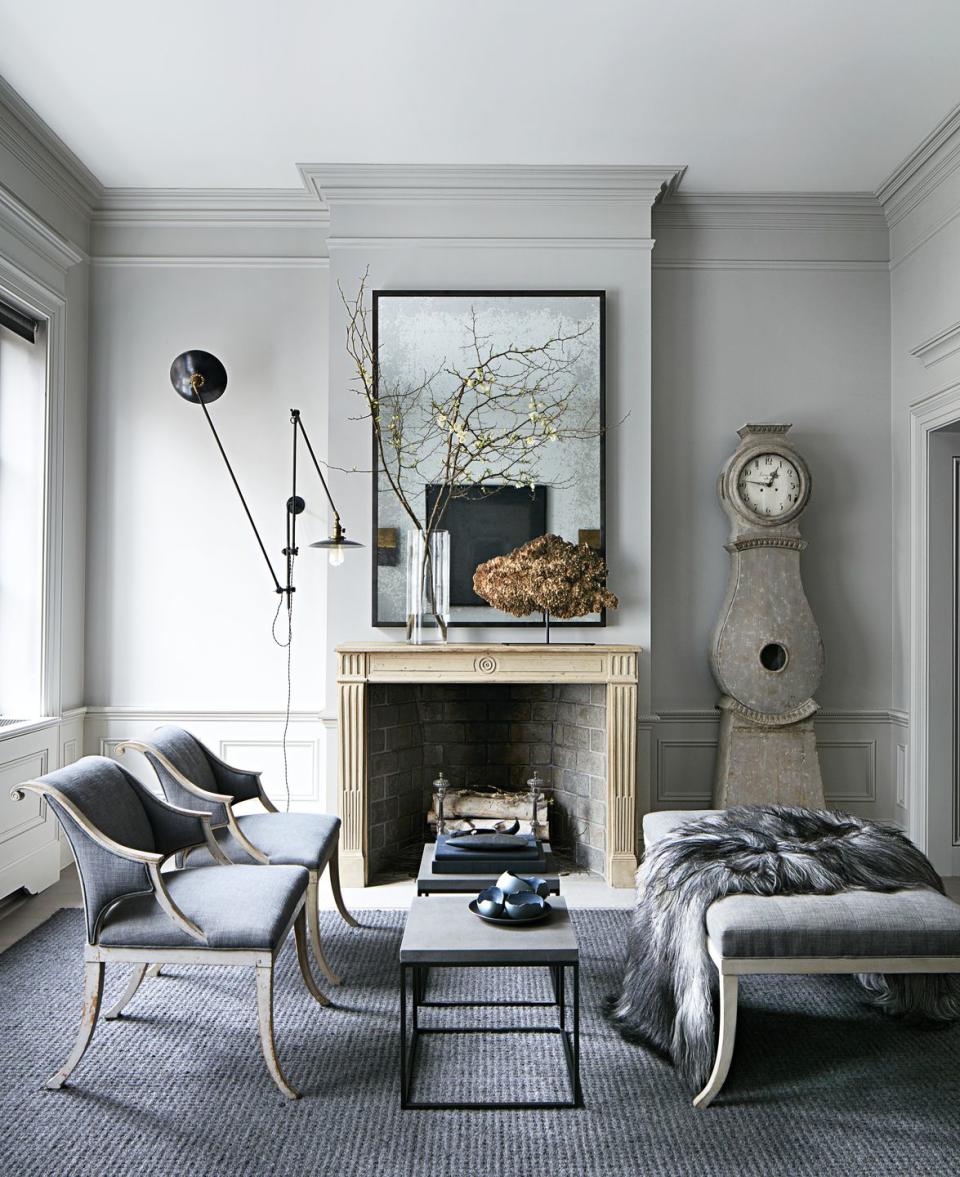
The living room of Eric Pike and Stefan Steil’s apartment in an 1840s Federal townhouse in New York City’s West Village. The 19th-century armchairs, upholstered in a Perennials fabric, and the circa-1800 tall-case Mora clock are Swedish. The bronze-and-basalt cocktail tables are custom, the steel wall lamp is by Wo & Wé, and the burl-root sculpture on the mantel is from Full Circle Modern.
A taxidermy African nyala head from upstate sets the offbeat tone in the living room by looking askew rather than forward. Next to a Gustavian settee from Lars Bolander, a 1915 bust of a Swedish boy purchased from Dienst + Dotter Antikviteter looks out to the garden below. A Swedish grandfather clock presides across the room with stately grandeur. Each object, whether handmade, found in the woods, or purchased at an antiques shop, is carefully considered to fit in while standing out.
“Their attention to detail, texture, and color just floors me,” says their friend John Derian, the artist, designer, and cult shopkeeper. “You see a passion in everything they do.”
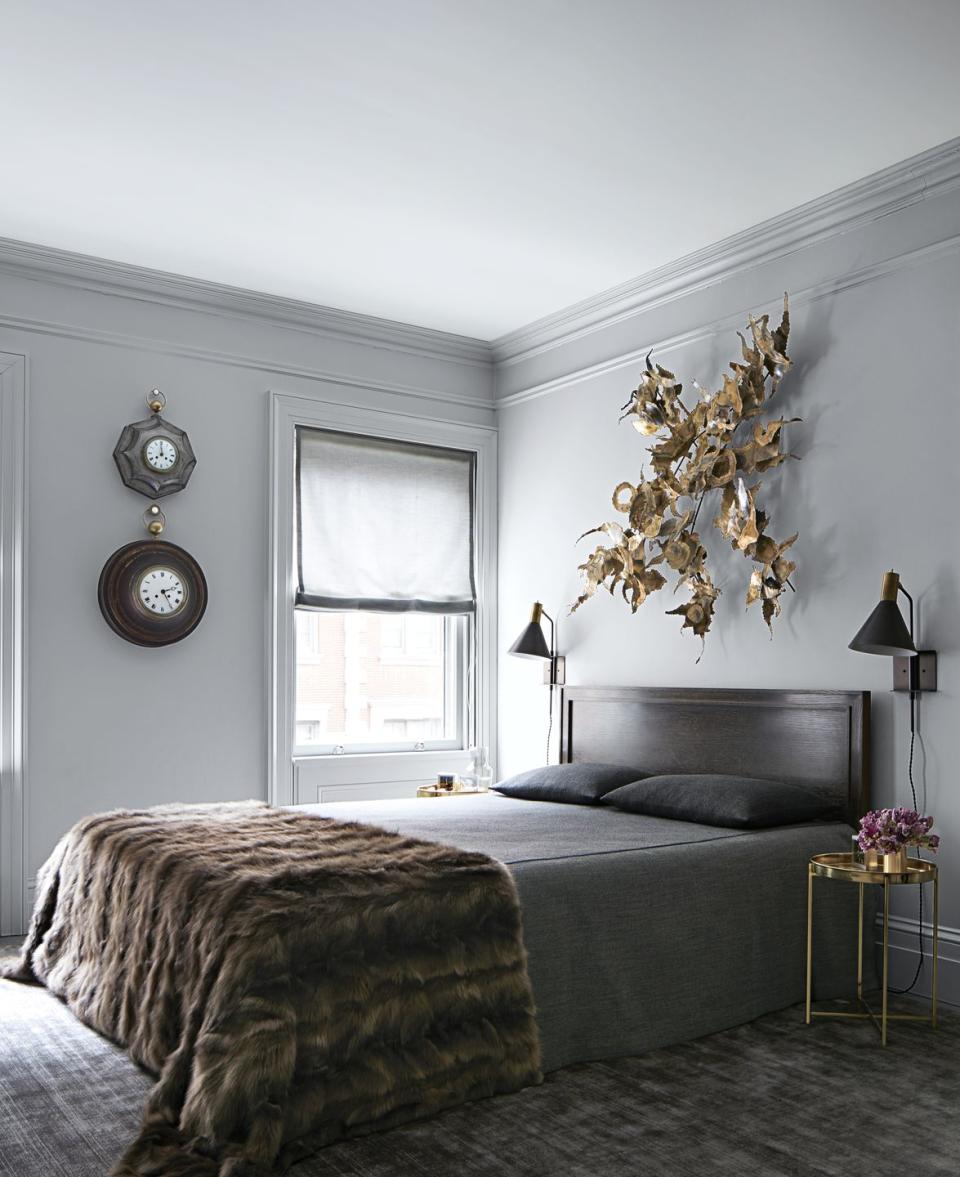
In the bedroom, a 1960s wall sculpture by William Friedle hangs above a custom oak bed. The sconces are by Atelier de Troupe, the antique tole clocks are French, and the walls are in Benjamin Moore’s Morning Dew.
The antiquarian Jill Dienst admires the couple’s elegant restraint. “Every object and arrangement of space is a conscious decision, yet the rooms never really appear that way,” she observes. “That’s the key to their almost Nordic aesthetic magic.”
Another key is the integration of highly personal pieces. In the dining room, for instance, where an 18th- century Swedish lantern hangs over a vintage handblown bell jar from John Derian set atop a custom table designed by Pike, there’s an antique portrait of an almost menacing 19th-century politician and lawyer-Daniel Webster, an ancestor of Pike’s. It was passed down to him through his family. “Nobody wanted it,” he says. “But I like it because it reminds me of my childhood.”
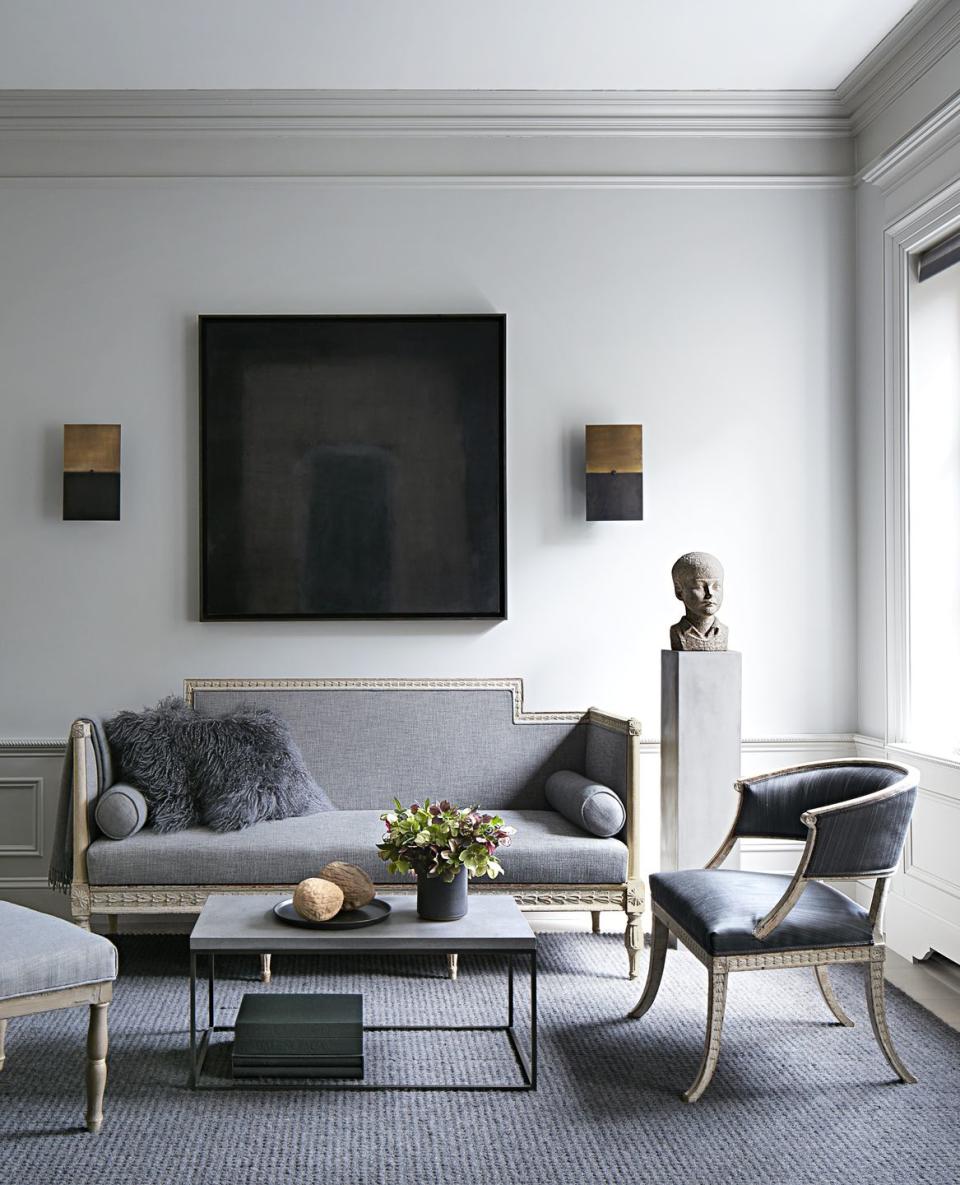
In the bedroom, a display jar full of blown exotic eggs of varying sizes, each hand-painted gray by Pike (“a sculptural creative challenge,” he says) rests in the fireplace. Above the bed, a Brutalist 1960s sculpture by William Friedle emphasizes the couple’s interest in nature and brings to mind dead leaves in the fall. In the office, another vintage cloche showcases dozens of pale blue butterflies painstakingly assembled by Steil. He also has a passion for empty wasps’ nests and will climb on ladders to cut them down and bring them home. “When Eric spotted this one,” Steil says of the nest on the shelf, “I told him I’d go get the clippers.” If the apartment has a sense of fleeting time and hints of mortality, suggested by the gray tones, taxidermy, petrified wood burls, old nests, and other objects suggesting life passed by, Steil and Pike don’t quite see it that way. “We feel very much alive in our oasis,” says Pike, who together with Steil redid the building’s stairway and foyers too.
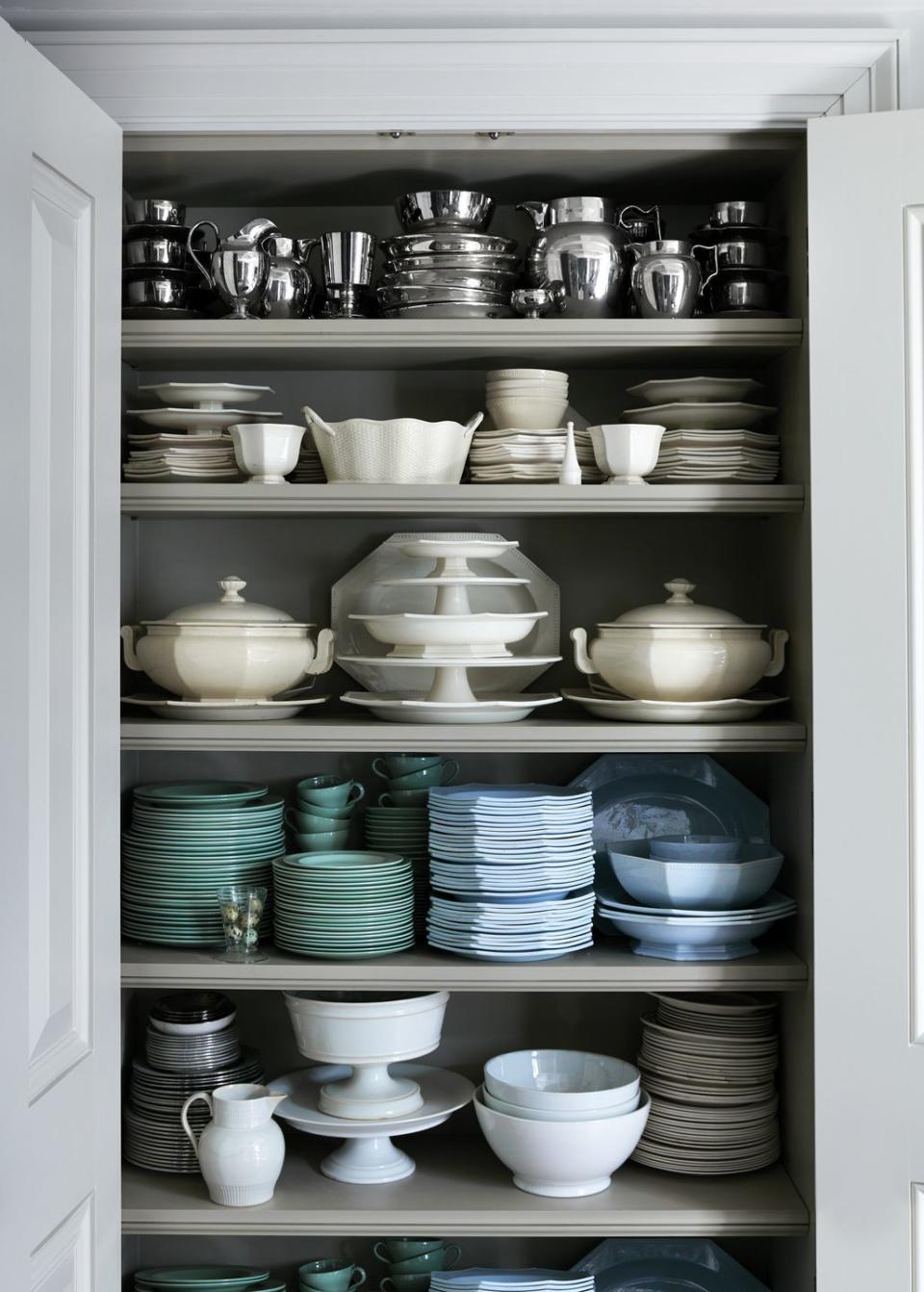
A collection of antique and vintage tableware-including silver lusterware pitchers, antique Creil & Montereau dishes, and Wedgwood vessels-are stored inside a cabinet painted in Benjamin Moore’s Gray Owl.
And each September 11, when memorial beams of light shoot up from where the Twin Towers fell, they have a view of the rays through the restoration glass of their French casement living room windows. As Pike observes: “It’s all about renewal.”
('You Might Also Like',)


